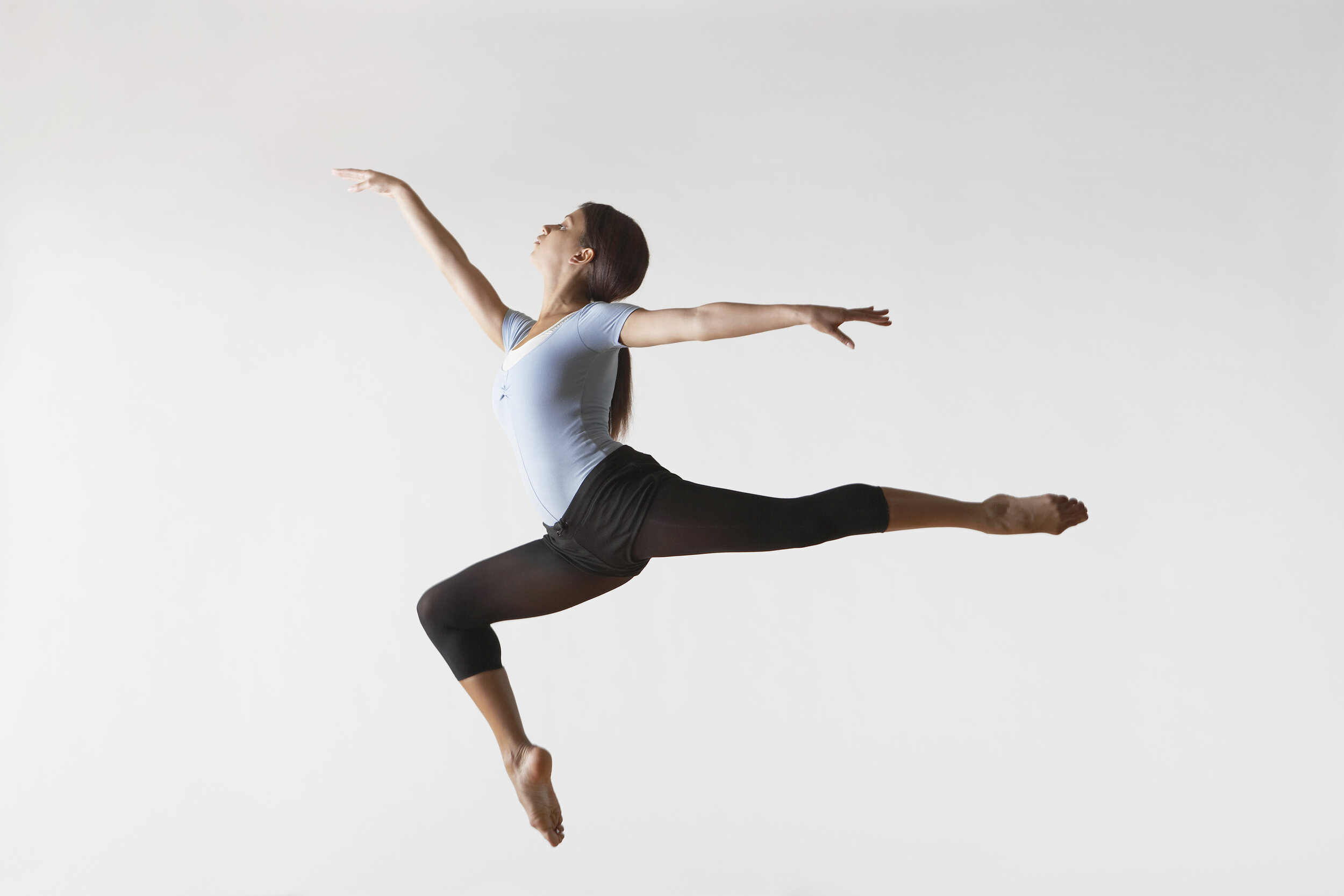Is Stretching Important? How to Prepare Your Body for Movement
Over 20 years ago, a shift in the belief from stretching being necessary as a warm-up prior to engaging in athletics to stretching is not recommended due to inhibition of performance. Several studies found that static stretching causes a decrease in strength performance, thereby establishing this opinion.
Studies Conducted on Stretching
Today, many medical, fitness and sports specific magazines perpetuate this belief. Static stretching is holding a stretch position for an extended length of time. Many studies focused on measuring static and dynamic stretching with recovery time of strength. [1] One study showed a quick recovery time, 10 minutes after stretching the calf area. [2] Another study found that static stretching of the larger complex muscles necessary for jumping and sprinting required 24 hours of recovery time after static stretching to restore strength. These studies varied on length of time held in the static stretch, first one for 5 minutes, second one for 15 minutes. The first study subjects were young females with no description of physical background, and second study subjects were young male soccer players. These two examples of the many studies published cannot be compared due to the differences of parameters of the testing.
What is interesting is how a belief is born based on studies of small groups of specific people, male versus female, athletes or non-athletes, and the areas of the body being stretched. Today, research has advanced tremendously focusing on myofascia giving a better understanding of how tissues when stretched affect the fascia, ligaments and muscle. Each type of movement activity requires a different body preparation, therefore, a proper warm-up needs to match the activity type.
The myofascial responses to activities such as running are different than jumping or hopping on one leg. In dance, the variety of movements, from floor to air and shifting tempos from suspension to staccato, challenge the myofascia in a variety of ways. Performing specific warm-up movements, whether you hold a stretch, walk around, or jump up and down, prepare the tissues in distinctive ways. Understanding how to differentiate between types of movements and the myofascial actions will help with choosing the type of warm-up movements that match the activity.
[3] There are three different dynamic interactions between collagenous tissues and muscular contractions, depending on the movement.
In jumping, hopping, walking and the counter movement jump, the elastic recoil capacity is what drives the motions. Energy conservation and storing kinetic energy in the tissues are the required properties of these types of activities.
Oscillatory motion in nature
Landing from the jump, the elastic energy is stored in the collagenous tissues by lengthening and the muscles stiffen (an isometric contraction) to allow the energy stored in the tendons to be released to jump or take the next step.
Each hop or step is gathering energy in the collagenous tissues and the stored energy is released to propel the body forward or in the air.
[4] Crimp alignment in the collagen fibers is necessary for this movement
Warm-up recommendation
Joint mobility using micro-movements such as hip-knee-ankle circles
Trunk rotations and side bending small ranges
Light bouncing such as standing lifting and lowering heels with easy rebound from the floor
Calf lowers (slowly) and lifts quickly
Incline running, acceleration, throwing or squat jump, not bouncing as in jumping, are explosive movements that amplify power.
Muscles eccentrically contract
The kinetic energy from the muscles is used for lengthening fascial tendinous fibers until they reach their maximum length
Power production
[5] Crimp alignment in the collagen fibers is necessary for this movement
Warm-up recommendation
Short quick strides
Squat drops to stand or to plank
Side steps
Hacky sack foot tapping
Alternate arm and leg jumping jacks
Decline running, deceleration, catching a heavy ball, landing not to store the energy but distribute the energy through the myofascia and reduction of force.
Energy absorption
Eccentric contractions from landing or catching
Viscosity of the ground substance that plays the role of absorbing energy
Warm-up recommendations
Hand jumping on a wall or floor
Eccentric quadriceps steps down
Squat-plank knee to arm
Poles with band steps forward with trunk rotation
Benefits of Preparation Before Your Specific Workout
If you are competing in an athletic event, warming the body up with gentle small joint movements and increasing the heat by easy jogging, or jumping, better prepare the body. If you are going on a dance stage for performance, the protocol for dancers is quite extensive. Dancers are a whole different breed. They would not do well if they were to just jump a few times or jogged a little before curtain time. Dancers go to the barre and begin with leg swings and pliés prior to working the feet. Their warm-up is dynamic stretching, then jumping and preparing the mind by running through the phrases of movements of the choreography.
STRETCHING PROVIDES BENEFITS:
Increased range of motion of the joints through the effects of the myofascia and nervous system
Improved capacity to move with ease
Allows the muscle to exert more force at longer lengths (imagine a baseball player’s split to touch the base)
Use it as a form of self-diagnosis, checking different regions of the body for soreness or tightness before or after sports and exercise
[6] Decrease muscle tone for decreased heart rate and blood pressure
Reduce anxiety
[7] Improve the function of blood vessels
Maintain functional range of motion rather than excessive flexibility
Benefits of static stretching before exercise seem to outweigh the disadvantages when the stretching is incorporated into a full warm-up and when the duration is reasonable ([8] less than 30 seconds per muscle group for people under 40 and 60 seconds for people over 40).
SPECIFIC PREPARATION TO MEET THE ATHLETIC TASK TO INCLUDE:Myofascial response
Gliding
Hydration
Proprioception
Joints activated with mobility in functional range of motion, not hypermobility
Gradually increase heart rate
Breathing for balancing of O2 and CO2
Low intensity warm-up to adapt your nervous system from sitting mode to higher intensity, run, jump or dance, tells the brain it is time to go
Increase tissue temperature
Recovery After Exercise
After an event or workout, restoring the body is as important as its preparation. Taking the time to hold longer stretches with ease in breathing, not pushing the limits, restores the body’s nervous system to a more balanced parasympathetic tone. Releases tensions held in the joints and tissues from the activity especially if the intensity level was high. Using props such as a soft foam roller, balls and belts for myofascial release increases recovery time significantly.
Preparation for performance, whether it is on the stage, rehearsal, going for a run, or competition, the body improves its ability to sustain the length of time during exercise, and be resilient to an impact from landing on the ground and minimizing injuries.
Footnotes:1 Mizuno T, Matsumoto M, Umemura Y. Stretching-induced deficit of maximal isometric torque is restored within 10 minutes. J Strength Cond Res. 2014 Jan;28(1):147-53. doi: 10.1519/JSC.0b013e3182964220. PMID: 23615480.https://pubmed.ncbi.nlm.nih.gov/23615480/2 Haddad M, Dridi A, Chtara M, Chaouachi A, Wong del P, Behm D, Chamari K. Static stretching can impair explosive performance for at least 24 hours. J Strength Cond Res. 2014 Jan;28(1):140-6. doi: 10.1519/JSC.0b013e3182964836. PMID: 23615481https://pubmed.ncbi.nlm.nih.gov/23615481 3 Fascia in Sports and Movement, Robert Schleip and Jan Wilke, chapter 244 See Madeline Black blog post https://www.madelineblack.com/movement-science/whole-body-connecting-force-biotensegrity-model-for-movement 5 See Madeline Black blog post https://www.madelineblack.com/movement-science/whole-body-connecting-force-biotensegrity-model-for-movement6 Wu B, You GX, Wu P, et al. [Effects of repeated body position change training for human orthostatic tolerance]. Hang Tian yi xue yu yi xue Gong Cheng = Space Medicine & Medical Engineering. 2003 Oct;16(5):326-328. https://europepmc.org/article/med/147532307 Bisconti, A.V., Cè, E., Longo, S., Venturelli, M., Coratella, G., Limonta, E., Doria, C., Rampichini, S. and Esposito, F. (2020), Evidence for improved systemic and local vascular function after long‐term passive static stretching training of the musculoskeletal system. J Physiol, 598: 3645-3666. https://doi.org/10.1113/JP2798668 Keil, Mackenzie, "Have we been stretching the truth? The effects of stretching post exercise and delayed onset muscle soreness" (2019). Creative Components. 203. https://lib.dr.iastate.edu/creativecomponents/203 Pg. 14



